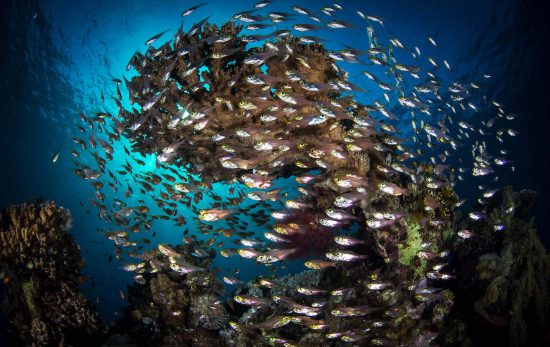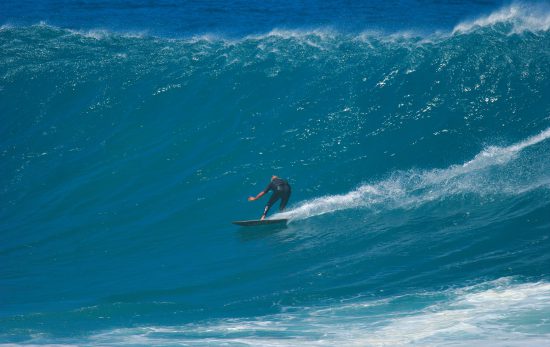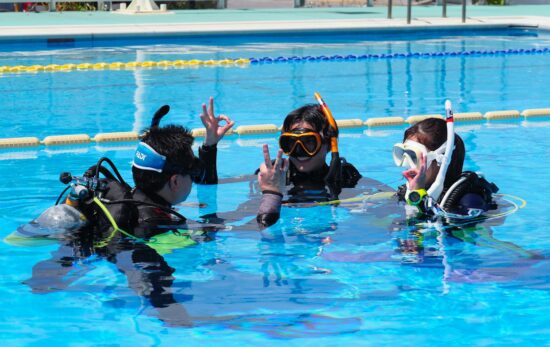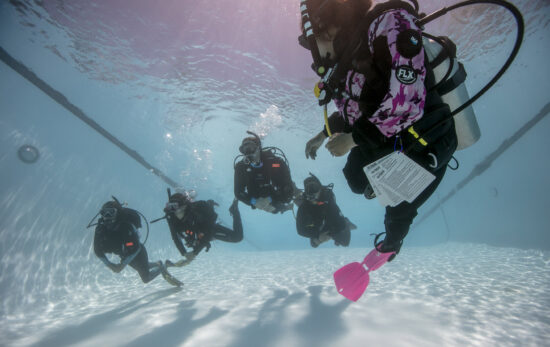You may have heard people say, “I’m a scuba diver,” or “I’m a PADI Diver,” but you may not have encountered the term PADI Open Water Diver until you started searching for information about learning how to scuba dive or speaking to a friend who has. Here’s what you need to know about the difference between the PADI Scuba Diver and PADI Open Water Diver courses, from the course requirements to the Open Water Diver depth limit.
When people say they have a diving license, a ticket, or a scuba certification, they’re likely talking about an Open Water Diver certification.
What Does It Mean to Be an Open Water Diver?
PADI Open Water Diver is the first autonomous scuba certification level, and holding the certification allows you to:
- Obtain air fills.
- Rent dive equipment.
- Dive on your own with a buddy (who can be another Open Water Diver and does NOT have to be a diving professional) up to a maximum depth of 18 meters/60 feet.
- Book boat dives.
- Take additional classes, such as underwater photography and videography.
- Progress to the PADI Advanced Open Water Diver level.
- Create epic memories with family and friends.
- Dive into adventures across the globe.
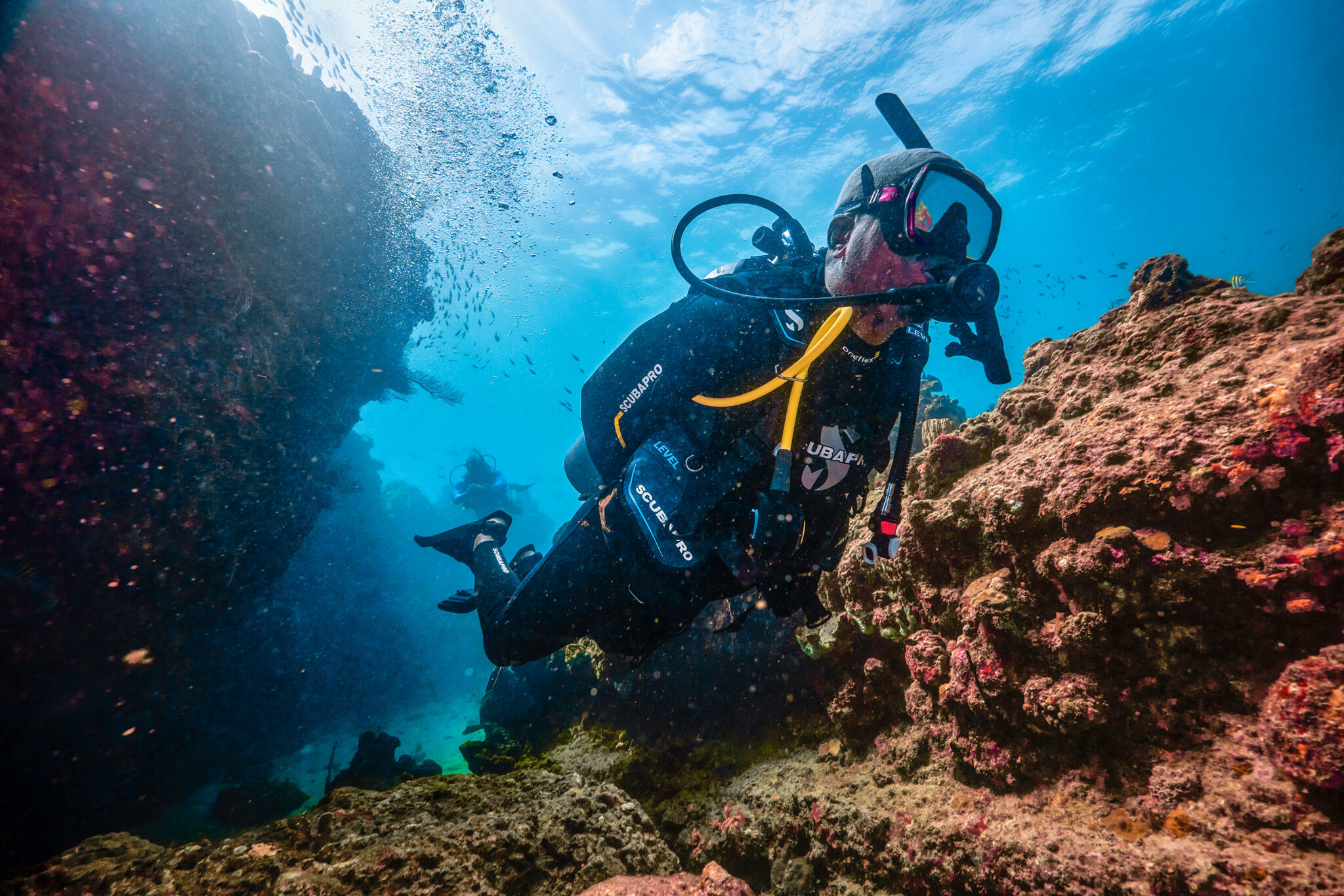
The PADI Open Water Diver Course: The Way the World Learns to Dive
The PADI Open Water Diver certification is the most-recognized scuba diving certification in the world, and more than 900,000 divers choose PADI each year. Read more about great places to learn to dive around the world here.
So what’s the PADI Scuba Diver course all about? The PADI Scuba Diver course is a subset of the PADI Open Water Diver course.
Completing the PADI Scuba Diver course is a bit like obtaining a learner’s permit when learning to drive. It’s an intermediate step towards full scuba certification for aspiring scuba divers who:
- Don’t have time to complete the entire Open Water Diver course.
- Can’t finish their Open Water Diver training due to unique circumstances.
- Only want to dive with a PADI Professional (as opposed to with a buddy / another open water diver).
What’s the Difference Between a Scuba Diver and an Open Water Diver?
The key differences between the PADI Scuba Diver course and a PADI Open Water Diver course are:
- The time required to complete the course.
- The maximum depth you become certified to dive to.
- Whom you can dive with following certification.
Let’s take a more in-depth look at the similarities and the differences between the two PADI courses.

PADI Scuba Diver and PADI Open Water Diver: Prerequisites
To take part in a PADI Open Water Diver course or the PADI Scuba Diver course, you must be:
- At least 10 years old.
- Able to swim.
- Medically fit for scuba diving (in some countries, this requires a medical certificate from a physician). Note that this does not mean you need to be an Olympic athlete, but you need a reasonable fitness level.

PADI Scuba Diver Vs. PADI Open Water Diver: Maximum Depth
Two major differences between a PADI Scuba Diver and a PADI Open Water Diver are the maximum depth that qualified divers can dive to and who they are qualified to dive with. Here’s an overview of each certification:
- PADI Open Water Divers can plan and execute dives with a certified buddy or dive professional to a maximum depth of 18 meters/60 feet.
- PADI Scuba Divers may only dive under the direct supervision of a PADI Professional to a maximum depth of 12 meters/40 feet.
What is the Benefit of Diving Deeper?
Deeper doesn’t always mean better. Thousands of amazing dive sites worldwide can be dived at 12 meters/40 feet or less! However, being able to dive deeper, to 18 meters/60 feet as an open water diver, opens up even more dive sites for you to explore. Additionally, some marine species live in deeper waters, so diving deeper gives you an increased chance of seeing them. There are also wrecks to explore, different topographies, and different corals at depths between 12 meters/40 feet and 18 meters/60 feet.

PADI Scuba Diver vs. PADI Open Water Diver: Course Requirements
Another factor that commonly affects whether someone chooses to become a PADI Scuba Diver or a PADI Open Water Diver is the amount of time they have available. Here’s how long you need to complete each course and the key elements each one entails.
Open Water Diver (4-7 days)
- Learn fundamental concepts about scuba through PADI eLearning or classroom instruction (knowledge development).
- Complete five confined water (pool) skill practice sessions.
- Complete four open water (ocean/lake) dives.
- Complete a 10-minute swim/float demonstrating comfort in water too deep to stand and a 200 meter/yard continuous surface swim or a 300 meter/yard swim with mask, fins and snorkel.
Scuba Diver (2-3 days)
- Learn fundamental concepts about scuba diving through PADI eLearning or classroom instruction.
- Complete three confined water skill practice sessions.
- Complete two open water (ocean/lake) dives.
- Complete a 10-minute swim/float demonstrating comfort in water too deep to stand.
The PADI Scuba Diver course is (roughly) the first half of the PADI Open Water Diver course – which means you can upgrade with ease later. However, the PADI Scuba Diver course omits some of the more challenging skills that are included in the full Open Water Diver course (which you will complete if you upgrade later). It is a good choice for aspiring scuba divers who have limited time, are not sure they want to commit to a full Open Water Diver course yet, or for children (over the age of 10 years).

Upgrading from PADI Scuba Diver to PADI Open Water Diver
Looking at the information above, we can see that to upgrade to a full Open Water Diver, PADI Scuba Divers need to:
- Complete the remaining 2 out of 5 confined water (pool) skill practice sessions.
- Complete the remaining 2 out of 4 open water dives.
- Complete two additional knowledge development modules, a quiz, and a final exam.
- Additionally, complete a surface swim.
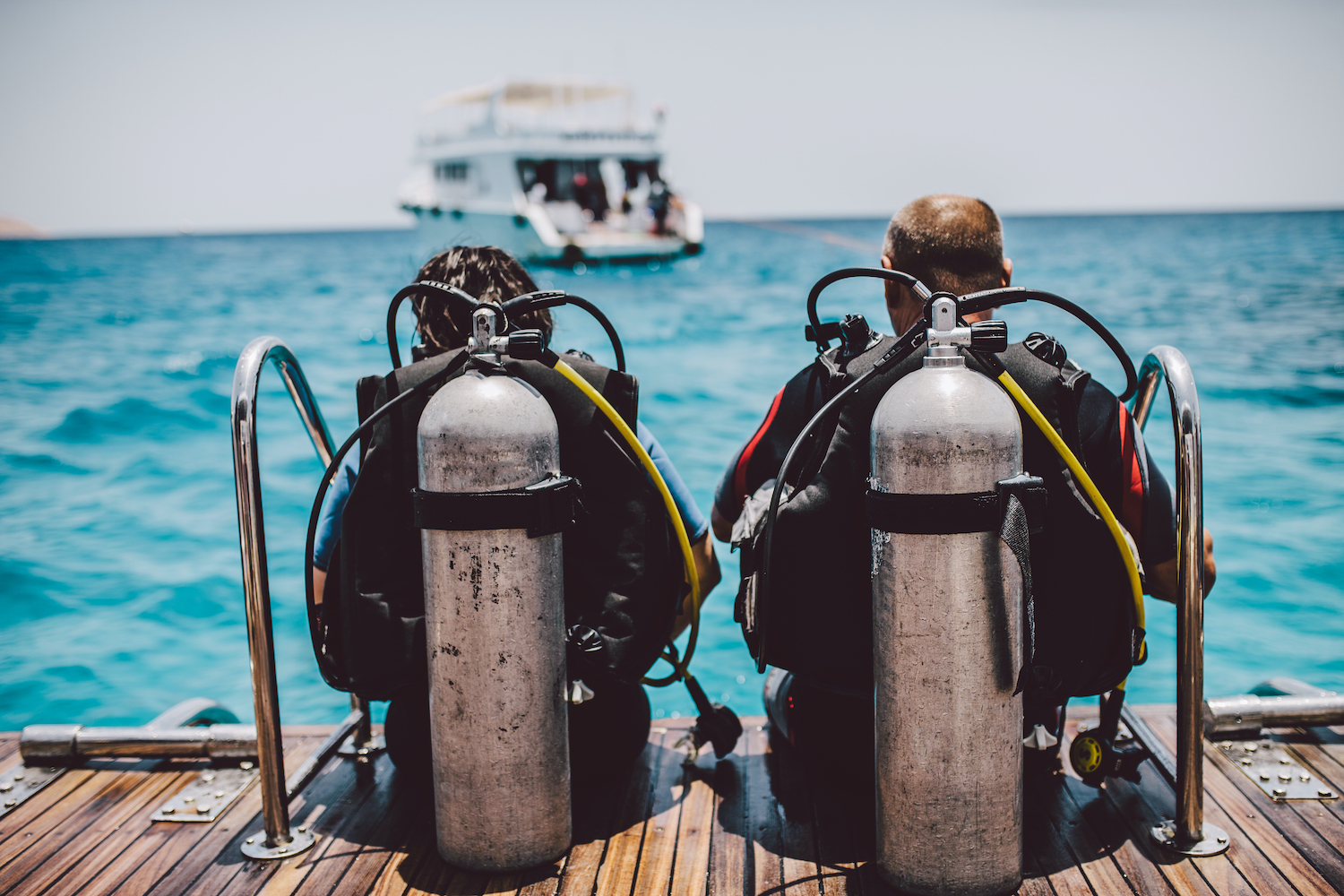
Still Unsure if Scuba Diving is Right for You?
If you are still undecided whether scuba diving is the right hobby for you, why not try a Discover Scuba® Diving (DSD) experience? This short experience is the ideal way for newcomers to see what scuba diving is all about without having to commit to multiple days of diving. Highlights of this fun taster session include:
- Learning basic scuba gear skills.
- Taking your first breaths underwater.
- Understanding the fundamentals of diving.
- Using hand signals to communicate underwater.
- Having a PADI Professional on hand to answer your questions.
What’s also great about the DSD program is that if you decide you want to become scuba certified, the information and skills learned can be used and applied to a PADI Open Water Diver certification.
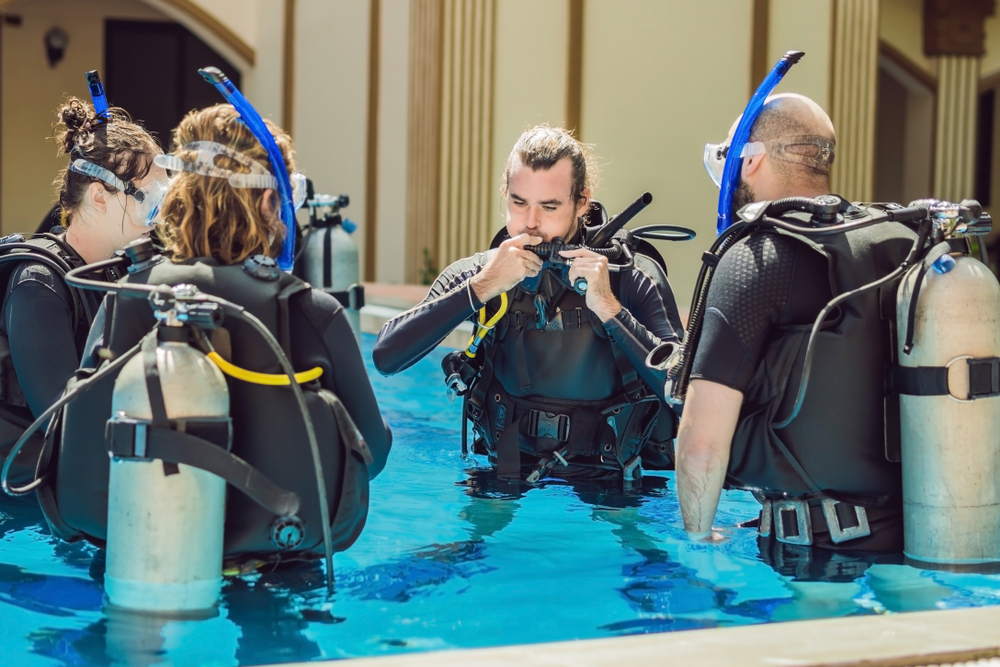
Ready to Get Scuba Certified?
You now know the differences between the Scuba Diver course and the PADI Open Water Diver course. If you’re feeling ready to get in the water, there’s no better time to sign up to get PADI certified. Click below or contact your local dive center to get started.

